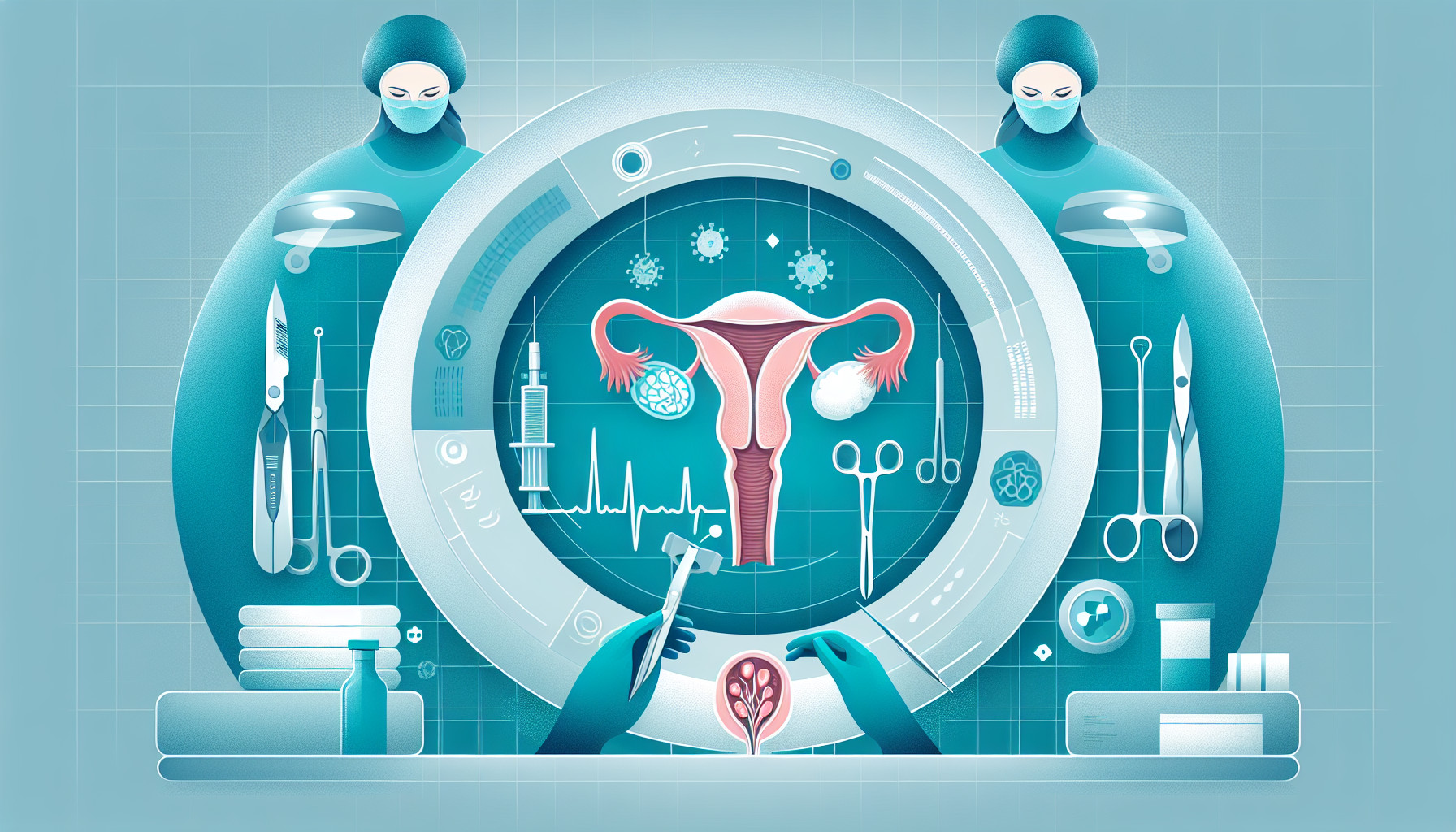Our Summary
This research paper is about a 22-year-old woman who came to the emergency room with severe lower abdominal pain. After performing ultrasound and CT scans, doctors found that she had a ruptured cyst on her left ovary, which had caused internal bleeding. This kind of situation can be dangerous as it can lead to a condition called hypovolemic shock, where severe blood and fluid loss make the heart unable to pump enough blood to the body. To treat her, doctors had to perform a surgical procedure to remove the wall of the cyst on her left ovary and clean up the internal bleeding. The study highlights the importance of correctly identifying and managing such cases to prevent further health complications.
FAQs
- What are the dangers of a ruptured ovarian cyst?
- What is the treatment for a ruptured ovarian cyst causing internal bleeding?
- What is hypovolemic shock and how is it related to a ruptured ovarian cyst?
Doctor’s Tip
One helpful tip a doctor might tell a patient about ovarian cyst removal is to follow all post-operative instructions carefully. This may include taking prescribed pain medication, avoiding strenuous activities, and attending follow-up appointments. It’s important to monitor for any signs of infection or complications, such as fever, excessive bleeding, or severe abdominal pain, and to seek medical attention if any concerning symptoms arise. Overall, proper care and monitoring following ovarian cyst removal can help ensure a smooth and successful recovery.
Suitable For
Patients who are typically recommended ovarian cyst removal include:
Patients with large ovarian cysts: Large ovarian cysts can cause pain, discomfort, and complications such as torsion (twisting) or rupture. Removal of large cysts may be recommended to prevent these complications.
Patients with complex ovarian cysts: Complex ovarian cysts may have solid components or features that suggest a higher risk of malignancy. In these cases, surgical removal of the cyst may be recommended to rule out cancer.
Patients with recurrent ovarian cysts: Some women may have a history of recurrent ovarian cysts that cause symptoms such as pain, bloating, or irregular menstrual cycles. In these cases, removal of the cysts may be recommended to alleviate symptoms and prevent future recurrences.
Patients with symptoms such as severe abdominal pain or bloating: Ovarian cysts that cause severe symptoms such as persistent abdominal pain, bloating, or difficulty urinating may require surgical removal to relieve symptoms and prevent complications.
Patients with ovarian cysts that are growing or changing: Ovarian cysts that are growing in size or changing in appearance may need to be removed to prevent potential complications such as rupture or torsion.
Patients with suspected ovarian cancer: In cases where ovarian cancer is suspected, surgical removal of the cyst may be necessary for diagnosis and treatment.
It is important for healthcare providers to carefully evaluate each individual case and consider factors such as the size, type, and symptoms of the ovarian cyst before recommending removal. Additionally, the patient’s age, medical history, and future fertility goals may also play a role in the decision-making process.
Timeline
Before ovarian cyst removal:
- Patient experiences severe lower abdominal pain.
- Patient seeks medical attention and undergoes ultrasound and CT scans to diagnose the issue.
- Doctors identify a ruptured cyst on the left ovary causing internal bleeding.
- Patient may experience symptoms such as nausea, vomiting, and weakness due to blood loss.
After ovarian cyst removal:
- Patient undergoes surgical procedure to remove the wall of the cyst on the left ovary and stop internal bleeding.
- Patient may need to stay in the hospital for monitoring and recovery.
- Patient may experience pain and discomfort post-surgery.
- Patient may need to follow up with doctors for further monitoring and management of any complications.
- Patient may need to take medications for pain relief and to prevent infection.
- Patient may need to rest and avoid strenuous activities for a period of time to allow for proper healing.
What to Ask Your Doctor
- What are the risks and benefits of removing the ovarian cyst?
- What type of surgical procedure will be used to remove the cyst?
- What is the recovery process like after ovarian cyst removal surgery?
- How long will it take to fully recover from the surgery?
- Are there any potential complications or side effects associated with ovarian cyst removal?
- Will removing the cyst affect my fertility or hormonal balance?
- Are there any alternative treatments or options available for managing the ovarian cyst?
- How often should I follow up with my doctor after the surgery?
- Are there any lifestyle changes or precautions I should take after the surgery to prevent future cysts?
- What symptoms should I watch out for that may indicate a complication after the surgery?
Reference
Authors: Mantecon O, George A, DeGeorge C, McCauley E, Mangal R, Stead TS, Peplinski B, Ganti L. Journal: Cureus. 2022 Sep 20;14(9):e29350. doi: 10.7759/cureus.29350. eCollection 2022 Sep. PMID: 36284799
